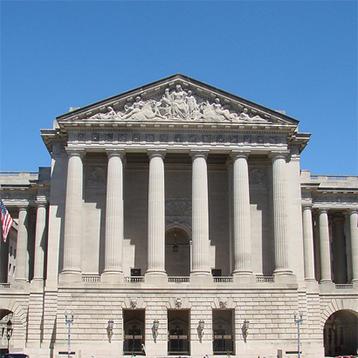Portuguese Architect Will Be Presented the 2011 Pritzker Architecture Prize in Washington, D.C.
Eduardo Souto de Moura, a 58 year old architect from Portugal, is the jury’s choice for the 2011 Pritzker Architecture Prize, it was announced today by Thomas J. Pritzker, chairman of The Hyatt Foundation which sponsors the prize. The formal ceremony for what has come to be known throughout the world as architecture’s highest honor will be in one of Washington, D.C.’s finest classical buildings, the Andrew W. Mellon Auditorium on June 2.
In announcing the jury’s choice, Pritzker elaborated, “This marks the second time in the history of the prize that a Portuguese architect has been chosen. The first was in 1992 when Alvaro Siza was so honored.”
The purpose of the Pritzker Architecture Prize, which was founded in 1979 by the late Jay A. Pritzker and his wife, Cindy, is to honor annually a living architect whose built work demonstrates a combination of those qualities of talent, vision and commitment, which has produced consistent and significant contributions to humanity and the built environment through the art of architecture. The laureates receive a $100,000 grant and a bronze medallion.
Pritzker Prize jury chairman, The Lord Palumbo, spoke from his home in the United Kingdom, quoting from the jury citation that focuses on the reasons for this year’s choice: “During the past three decades, Eduardo Souto de Moura has produced a body of work that is of our time but also carries echoes of architectural traditions.” And further, “His buildings have a unique ability to convey seemingly conflicting characteristics—power and modesty, bravado and subtlety, bold public authority and a sense of intimacy—at the same time.”
As a student, Souto de Moura worked for Alvaro Siza for five years. Since forming his own office in 1980, Souto de Moura has completed well over sixty projects, most in his native Portugal, but he has designs in Spain, Italy, Germany, United Kingdom and Switzerland. The projects include single family homes, a cinema, shopping centers, hotels, apartments, offices, art galleries and museums, schools, sports facilities and subways.
His stadium in Braga, Portugal was the site of European soccer championships when it was completed in 2004, and gained high praise. Nearly a million and a half cubic yards of granite were blasted from the site and crushed to make concrete for the stadium. Precise explosions of a mountain side created a hundred foot high granite face that terminates one end of the stadium. Souto de Moura describes this coexistence of the natural with the man made construction as good architecture. In his own words, “It was a drama to break down the mountain and make concrete from the stone.” The jury citation calls this work, “...muscular, monumental and very much at home within its powerful landscape.”
Another of his projects, the Burgo Tower, completed in 2007, constructed in the city where he lives and works, Porto, Portugal, is described by the jury as, “...two buildings side by side, one vertical and one horizontal with different scales, in dialogue with each other and the urban landscape.” Souto de Moura commented that “a twenty story office tower is an unusual project for me. I began my career building single family houses.”
Souto de Moura has designed numerous residences, one of which, House Number Two built in the town of Bom Jesus, was singled out by the jury for its “uncommon richness throughout the subtle banding in the concrete of its exterior walls.” Souto de Moura’s comments on the project: “Because the site was a fairly steep hill overlooking the city of Braga, we decided not to produce a large volume resting on a hilltop. Instead, we made the construction on five terraces with retainer walls, with a different function defined for each terrace-- fruit trees on the lowest level, a swimming pool on the next, the main parts of the house on the next, bedrooms on the fourth, and on the top, we planted a forest.”
Another project in his native city, Porto, is the Cultural Center completed in 1991, which the jury describes as “a testament to his ability to combine materials expressively.” He used copper, stone, concrete and wood.
A convent and monastery in a mountainous terrain near Amares, Portugal, called Santa Maria do Bouro was a project for Souto de Moura from 1989 to 1997, in which he converted the centuries old structure into a state inn. He recalls the walls were over four feet thick. Originally built in the 12th century, the jury declares in their citation that Souto de Moura “has created spaces that are both consistent with their history and modern in conception.”
Souto de Moura, in describing another of his projects, has said, “After the painter Paula Rego chose me as her architect, I was lucky to be able to choose the site. It was a fenced off forest with some open space in the middle. On the basis of the elevation of the trees, I proposed a set of volumes of varying heights. Developing this play between the artificial and nature helped define the exterior color, red concrete, a color in opposition to the green forest. Two large pyramids along the entrance axis prevent the project from being a neutral sum of boxes.” The Paula Rego Museum completed in 2008, is cited by the jury as “both civic and intimate, and so appropriate for the display of art.”


























